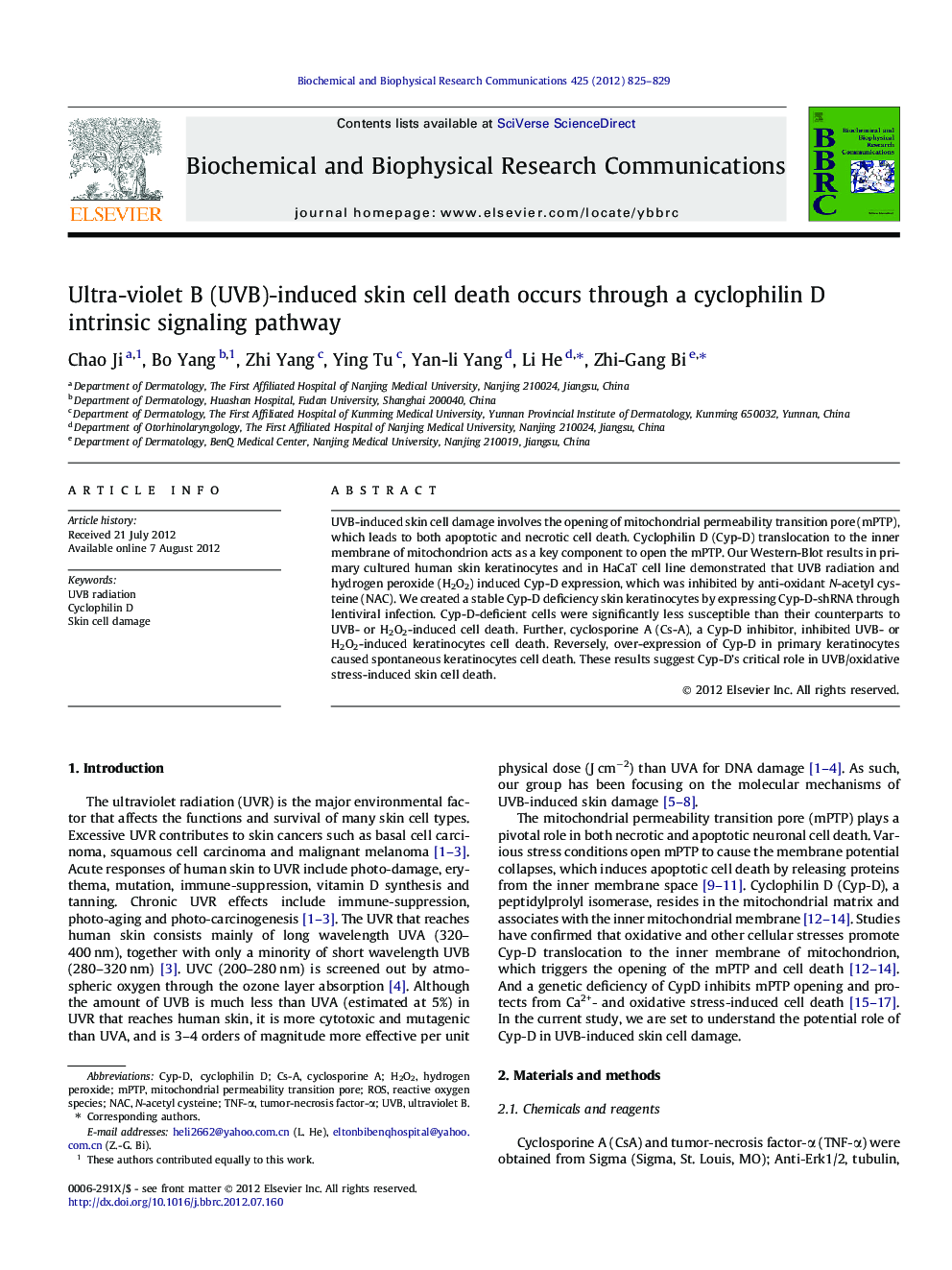| Article ID | Journal | Published Year | Pages | File Type |
|---|---|---|---|---|
| 1929614 | Biochemical and Biophysical Research Communications | 2012 | 5 Pages |
UVB-induced skin cell damage involves the opening of mitochondrial permeability transition pore (mPTP), which leads to both apoptotic and necrotic cell death. Cyclophilin D (Cyp-D) translocation to the inner membrane of mitochondrion acts as a key component to open the mPTP. Our Western-Blot results in primary cultured human skin keratinocytes and in HaCaT cell line demonstrated that UVB radiation and hydrogen peroxide (H2O2) induced Cyp-D expression, which was inhibited by anti-oxidant N-acetyl cysteine (NAC). We created a stable Cyp-D deficiency skin keratinocytes by expressing Cyp-D-shRNA through lentiviral infection. Cyp-D-deficient cells were significantly less susceptible than their counterparts to UVB- or H2O2-induced cell death. Further, cyclosporine A (Cs-A), a Cyp-D inhibitor, inhibited UVB- or H2O2-induced keratinocytes cell death. Reversely, over-expression of Cyp-D in primary keratinocytes caused spontaneous keratinocytes cell death. These results suggest Cyp-D’s critical role in UVB/oxidative stress-induced skin cell death.
► UVB radiated skin keratinocytes show cyclophilin D (Cyp-D) upregulation. ► NAC inhibits UVB induced Cyp-D expression, while H2O2 facilitates it. ► Cyp-D-deficient cells are significantly less susceptible to UVB induced cell death. ► Over-expression of Cyp-D causes spontaneous keratinocytes cell death.
